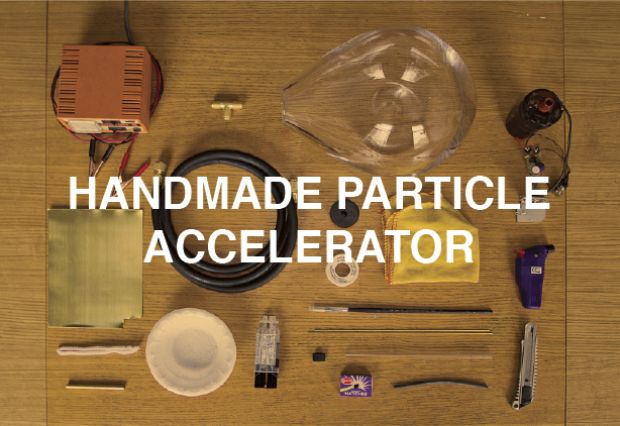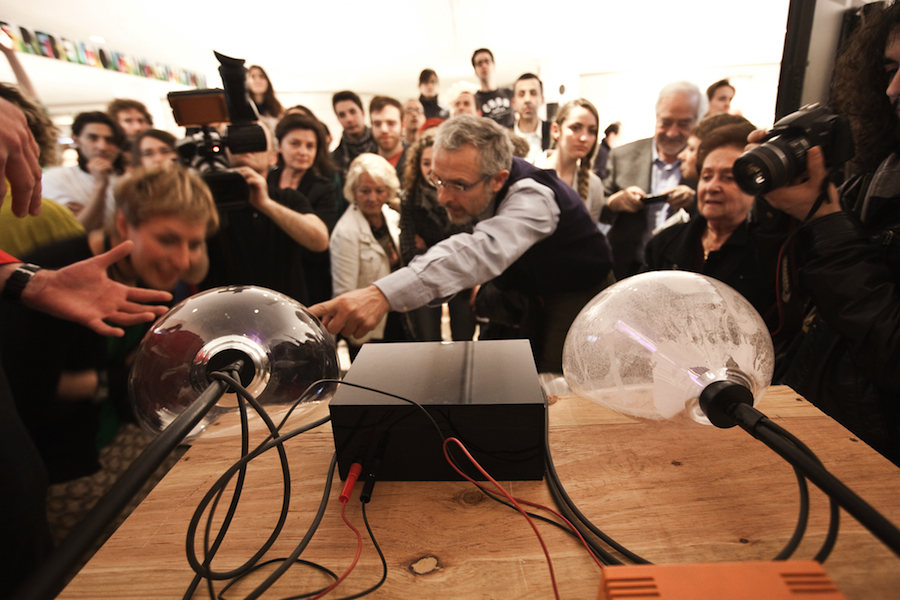Self-Confessed Science Geek Builds Hand-Crafted Particle Accelerator

July 3rd 2012 will go down in scientific history for the day in which scientists from CERN confirmed they had evidence of the elusive ‘God particle’, or Higgs Boson. But for designer Patrick Stevenson-Keating, it brought a new-found relevancy to his very own, working model of a particle accelerator made entirely out of common household objects. Namely, glass bulbs, a pump, magnets and some 45,000 volts.
“Much of modern science is becoming increasingly abstract and isolated from most people’s relatable lives,” Stevenson-Keating tells Wired on the reasons behind developing his ‘Handcrafted Particle Accelerator’. “Unfortunately, a lot of the time, the way science is communicated to the public makes it unapproachable and alienating.” His solution? Design and build from the ground-up a DIY version of a particle accelerator, the like of which has been made famous by CERN’s Large Hadron Collider near Geneva, Switzerland. “To me, both [design and science] have the incredible ability to completely alter the way in which you view the world – they can turn the banal into something really fantastic, almost magical.”
Developed in collaboration with a Cambridge physicist, the HPA fires a beam of particles, directed by magnets, through the vacuum of the accelerator. But rather than colliding protons as CERN does – “the energy levels to create proton acceleration are beyond anything achievable on this scale and budget” – the hand-crafted accelerator fires electrons into each other to achieve a reaction.
 A product and interaction designer by day at Superflux – a “collaborative design practice, [working] at the intersection of emerging technologies and everyday life to design for a world in flux” – and self-confessed science nerd, Stevenson-Keating believed in bringing his creation to the people, he’d make an otherwise un-relatable sub-section of science, relatable. “A hand-built particle accelerator for which could fit on your kitchen table, surrounded by designer homeware, was a wonderful juxtaposition,” he says on the demonstration of the hardware at a department store during Milan Design Week in April.
A product and interaction designer by day at Superflux – a “collaborative design practice, [working] at the intersection of emerging technologies and everyday life to design for a world in flux” – and self-confessed science nerd, Stevenson-Keating believed in bringing his creation to the people, he’d make an otherwise un-relatable sub-section of science, relatable. “A hand-built particle accelerator for which could fit on your kitchen table, surrounded by designer homeware, was a wonderful juxtaposition,” he says on the demonstration of the hardware at a department store during Milan Design Week in April.
“Maybe we aren’t moving toward a future where everyone has a particle accelerator on their mantelpiece. But the open-source movement combined with the rapid development of low-cost technology is surely paving the way for some exciting scientific developments,” says Stevenson-Keating.
Richard Birkett
Source: Wired